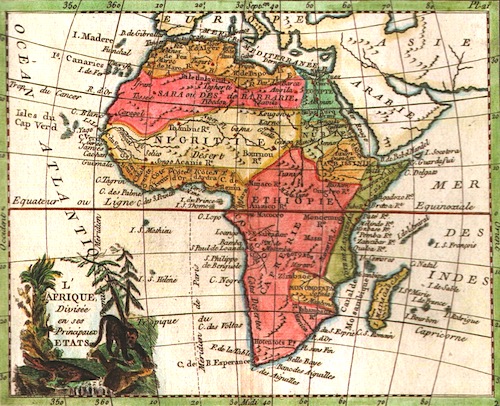 Chile peppers are ubiquitous in Africa. We saw in chapter two how they took over the entire country of Hungary, but here they conquered a continent. Not only are they produced commercially by every country on the continent, they have entered every possible niche in the complex cuisines in Africa countries that not only have their own culinary creations but also those of the colonizing countries of England, France, Portugal, Spain, Belgium, Italy, Netherlands, and Germany. Out of the fifty-four African countries and two disputed territories (Western Sahara and Somaliland), only two were never colonized: Ethiopia and Liberia.
Chile peppers are ubiquitous in Africa. We saw in chapter two how they took over the entire country of Hungary, but here they conquered a continent. Not only are they produced commercially by every country on the continent, they have entered every possible niche in the complex cuisines in Africa countries that not only have their own culinary creations but also those of the colonizing countries of England, France, Portugal, Spain, Belgium, Italy, Netherlands, and Germany. Out of the fifty-four African countries and two disputed territories (Western Sahara and Somaliland), only two were never colonized: Ethiopia and Liberia.
According to the 2009 statistics provided by the Food and Agriculture Organization of the United Nations, seven African countries are among the world’s top twenty producers of fresh chiles and peppers: Egypt (7), Nigeria (8), Algeria (11), Tunisia (12) Morocco (14), Ethiopia (16), and Ghana (18). Hungary finished at number twenty. In the production of dried chiles and peppers, Hungary did a little better, finishing nineteenth to Morocco’s number twenty position, but it was still beaten by six other African countries, Ethiopia (6), Ghana (10), Nigeria (12), Egypt (13), Benin (16), and Côte d’Ivoire (18).
Because the subject of chile peppers and cooking with them in Africa is so complex, the standard region-by-region examination will not suffice here. Rather, to show the depth of the chile pepper’s adoption by the Africans, I’m going to use a cuisine-based model rather than the regional model simply because there too many countries to cover for the geographical approach. From the pods themselves, I’m going to move on to spice mixtures and curries, hot sauces and pastes, and finally the most common types of other chile foods, from snacks to main dishes. Hopefully, this will be a better way to demonstrate the use of chiles with both native African ingredients and the imported New World foods.
Pili-Pili and the Pods Themselves
Since the Arabic countries north of the Sahara are linked culturally, economically, and gastronomically more closely with the Mediterranean region than with the rest of Africa, there is little doubt that chiles first appeared in North Africa. In the first place, the Strait of Gibraltar separates the Iberian Peninsula and north Africa by only a few miles, so it is a logical assumption that chiles would filter southward from Cadiz to Tangier by at least the early 1500s. In the second place, the Turks completed their conquest of North Africa in 1556, and since they had already introduced chiles into Hungary, it makes sense that they also carried them to Tunisia, Algeria, and Libya.
Although chiles probably appeared first in North Africa, they did not spread into the rest of Africa from that region but rather were brought by Portuguese explorers and traders. Even before Columbus, Portuguese exploration of Africa had proceeded down the west coast of the continent between 1460 and 1488. When Vasco de Gama rounded the Cape of Good Hope, crossed the Indian Ocean, and landed in India in 1498, he established the trade route for spices and other goods that the Portuguese controlled for more than a century.




